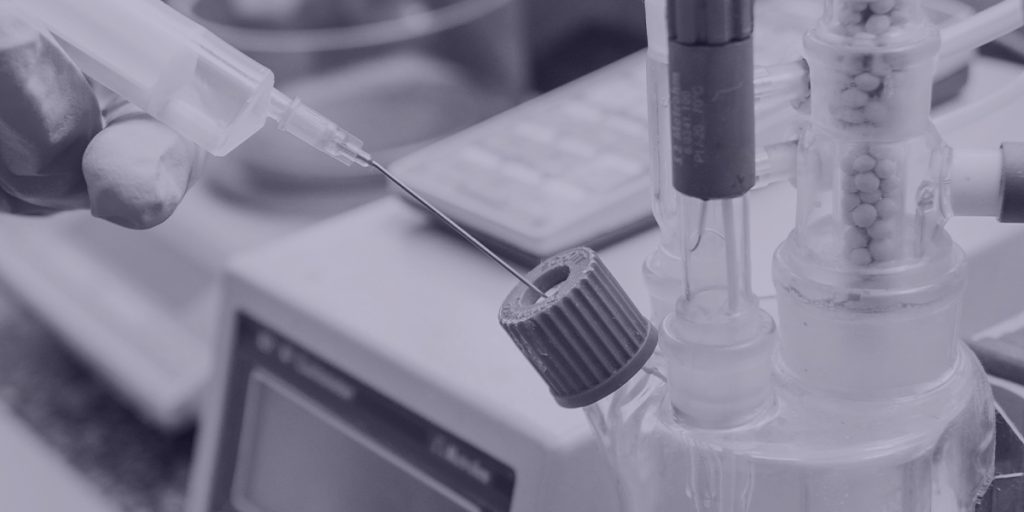Cookie Notice
We use cookies to personalise content and ads, to provide social media features, and to analyse our traffic. We also share information about your use of our site with our advertising and analytics partners. By clicking “I Agree”, you consent to our use of all cookies. Alternatively, you can click “Manage Preferences” to manage your cookie settings and opt-out of non-essential cookies. You can continue to use our website without accepting non-essential cookies. To find out more about our use of cookies and how to manage and disable cookies, please read our Cookie Notice which is available below.
- Introduction
1.1. Our website uses cookies. Cookies are small files containing an identifier (a string of letters and numbers) that are sent by a web server to a web browser and stored by the browser. The identifier is sent back to the server each time the browser requests a page from the server.
1.2. Cookies may be either “persistent” cookies or “session” cookies: a persistent cookie is stored by a web browser and remains valid until its set expiry date, unless deleted by the user before the expiry date; a session cookie expires at the end of the user session when the web browser is closed.
1.3. Cookies do not typically contain any information that personally identifies a user, but personal information that we store about you may be linked to the information stored in and obtained from cookies.
1.4. Cookies can be used by web servers to identify and track users as they navigate different pages on a website and identify users returning to a website.
- Our Cookies
2,1, We use both session and persistent cookies on our website.
2.2. The names of the cookies that we use on our website, and the purposes for which they are used, are set out below:
2.3. HubSpot Cookies
2.3.1. _hstc: The main cookie for tracking visitors.
2.3.2. hubspotutk: Keeps track of a visitor’s identity and provides personalized content. Passed to HubSpot on form submission and used for deduplicating contacts. (Expires: 10 years).
2.3.3, _hssc: Tracks sessions, determining if we should increment the session number and timestamps in the _hstc cookie. Contains the domain, view count and session start timestamp (expires: 30 min).
2.3.4. _hssrc: Set whenever HubSpot changes the session cookie. Indicates if the user has restarted their browser. (Expires: None. Session cookie).
2.4. Analytics Cookies
2.4.1. We use Google Analytics to analyse the use of our website.
2.4.2. Our analytics service provider generates statistical and other information about website use by means of cookies.
2.4.3. The analytics cookies used by our website include: _ga, _gat, __utma, __utmt, __utmb, __utmc, __utmz, and __utmv.
2.4.4. The information generated relating to our website is used to create reports about the use of our website.
2.4.5. Our analytics service provider’s privacy policy is available at: Google Privacy Policy.
2.5. Third-Party Cookies
2.5.1. Some of our web pages may also contain content from other sites like YouTube or Vimeo, which may set their own cookies. Additionally, if you share a link to a page, the service you share it on (e.g., Facebook) may set a cookie on your browser. ARK Invest International Ltd has no control over third-party cookies.
- Managing Cookies
3.1. Most browsers allow you to refuse to accept cookies; for example:
3.1.1. In Internet Explorer (version 11), you can block cookies using the cookie handling override settings available by clicking “Tools,” “Internet Options,” “Privacy,” and then “Advanced.”
3.2.2. In Firefox (version 47), you can block all cookies by clicking “Tools,” “Options,” “Privacy,” selecting “Use custom settings for history” from the drop-down menu, and unticking “Accept cookies from sites.”
3.3.3. In Chrome (version 52), you can block all cookies by accessing the “Customise and control” menu, clicking “Settings,” “Show advanced settings,” and “Content settings,” and then selecting “Block sites from setting any data” under the “Cookies” heading.
3.2. You may also manage your cookie preferences on our website at any time by clicking “Manage Cookie Preferences” in the footer of the website then select or deselect your cookie preferences.
3.3. Blocking all cookies will have a negative impact upon the usability of many websites.
3.4. If you block cookies, you will not be able to use all the features on our website.
- Deleting Cookies
4.1 You can delete cookies already stored on your computer, for example:
4.1.1. In Internet Explorer (version 11), you must manually delete cookie files (instructions available at: Microsoft).
4.1.2. In Firefox (version 47), you can delete cookies by clicking “Tools,” “Options,” “Privacy,” selecting “Use custom settings for history” from the drop-down menu, clicking “Show Cookies,” and then clicking “Remove All Cookies.”
4.1.3. In Chrome (version 52), you can delete all cookies by accessing the “Customise and control” menu, clicking “Settings,” “Show advanced settings,” “Clear browsing data,” and then selecting “Cookies and other site and plug-in data” before clicking “Clear browsing data.”
4.2. Deleting cookies will have a negative impact on the usability of many websites.
- Contact Information
5.1. This website is issued by ARK Invest International Ltd. ARK Invest International Ltd is registered in England and Wales, number 11770079.
5.2. If you have any questions with respect to this Cookie Notice, please contact us at [email protected].
Cookie Notice
We use cookies to personalise content and ads, to provide social media features, and to analyse our traffic. We also share information about your use of our site with our advertising and analytics partners. By clicking “I Agree”, you consent to our use of all cookies. Alternatively, you can click “Manage Preferences” to manage your cookie settings and opt-out of non-essential cookies. You can continue to use our website without accepting non-essential cookies. To find out more about our use of cookies and how to manage and disable cookies, please read our Cookie Notice which is available below.
- Introduction
1.1. Our website uses cookies. Cookies are small files containing an identifier (a string of letters and numbers) that are sent by a web server to a web browser and stored by the browser. The identifier is sent back to the server each time the browser requests a page from the server.
1.2. Cookies may be either “persistent” cookies or “session” cookies: a persistent cookie is stored by a web browser and remains valid until its set expiry date, unless deleted by the user before the expiry date; a session cookie expires at the end of the user session when the web browser is closed.
1.3. Cookies do not typically contain any information that personally identifies a user, but personal information that we store about you may be linked to the information stored in and obtained from cookies.
1.4. Cookies can be used by web servers to identify and track users as they navigate different pages on a website and identify users returning to a website.
- Our Cookies
2,1, We use both session and persistent cookies on our website.
2.2. The names of the cookies that we use on our website, and the purposes for which they are used, are set out below:
2.3. HubSpot Cookies
2.3.1. _hstc: The main cookie for tracking visitors.
2.3.2. hubspotutk: Keeps track of a visitor’s identity and provides personalized content. Passed to HubSpot on form submission and used for deduplicating contacts. (Expires: 10 years).
2.3.3, _hssc: Tracks sessions, determining if we should increment the session number and timestamps in the _hstc cookie. Contains the domain, view count and session start timestamp (expires: 30 min).
2.3.4. _hssrc: Set whenever HubSpot changes the session cookie. Indicates if the user has restarted their browser. (Expires: None. Session cookie).
2.4. Analytics Cookies
2.4.1. We use Google Analytics to analyse the use of our website.
2.4.2. Our analytics service provider generates statistical and other information about website use by means of cookies.
2.4.3. The analytics cookies used by our website include: _ga, _gat, __utma, __utmt, __utmb, __utmc, __utmz, and __utmv.
2.4.4. The information generated relating to our website is used to create reports about the use of our website.
2.4.5. Our analytics service provider’s privacy policy is available at: Google Privacy Policy.
2.5. Third-Party Cookies
2.5.1. Some of our web pages may also contain content from other sites like YouTube or Vimeo, which may set their own cookies. Additionally, if you share a link to a page, the service you share it on (e.g., Facebook) may set a cookie on your browser. ARK Invest International Ltd has no control over third-party cookies.
- Managing Cookies
3.1. Most browsers allow you to refuse to accept cookies; for example:
3.1.1. In Internet Explorer (version 11), you can block cookies using the cookie handling override settings available by clicking “Tools,” “Internet Options,” “Privacy,” and then “Advanced.”
3.2.2. In Firefox (version 47), you can block all cookies by clicking “Tools,” “Options,” “Privacy,” selecting “Use custom settings for history” from the drop-down menu, and unticking “Accept cookies from sites.”
3.3.3. In Chrome (version 52), you can block all cookies by accessing the “Customise and control” menu, clicking “Settings,” “Show advanced settings,” and “Content settings,” and then selecting “Block sites from setting any data” under the “Cookies” heading.
3.2. You may also manage your cookie preferences on our website at any time by clicking “Manage Cookie Preferences” in the footer of the website then select or deselect your cookie preferences.
3.3. Blocking all cookies will have a negative impact upon the usability of many websites.
3.4. If you block cookies, you will not be able to use all the features on our website.
- Deleting Cookies
4.1 You can delete cookies already stored on your computer, for example:
4.1.1. In Internet Explorer (version 11), you must manually delete cookie files (instructions available at: Microsoft).
4.1.2. In Firefox (version 47), you can delete cookies by clicking “Tools,” “Options,” “Privacy,” selecting “Use custom settings for history” from the drop-down menu, clicking “Show Cookies,” and then clicking “Remove All Cookies.”
4.1.3. In Chrome (version 52), you can delete all cookies by accessing the “Customise and control” menu, clicking “Settings,” “Show advanced settings,” “Clear browsing data,” and then selecting “Cookies and other site and plug-in data” before clicking “Clear browsing data.”
4.2. Deleting cookies will have a negative impact on the usability of many websites.
- Contact Information
5.1. This website and its contents are provided by IQ EQ Fund Management (Ireland) Limited (“IQ EQ”) acting in its capacity as management company of ARK Invest UCITS ICAV (the “ICAV”). IQ EQ is authorised and regulated by the Central Bank of Ireland. IQ EQ is registered in Ireland with registration number 148223.
5.2. If you have any questions with respect to this Cookie Notice, please contact us at [email protected].
Cookie Notice
We use cookies to personalise content and ads, to provide social media features, and to analyse our traffic. We also share information about your use of our site with our advertising and analytics partners. By clicking “I Agree”, you consent to our use of all cookies. Alternatively, you can click “Manage Preferences” to manage your cookie settings and opt-out of non-essential cookies. You can continue to use our website without accepting non-essential cookies. To find out more about our use of cookies and how to manage and disable cookies, please read our Cookie Notice which is available below.
- Introduction
1.1. Our website uses cookies. Cookies are small files containing an identifier (a string of letters and numbers) that are sent by a web server to a web browser and stored by the browser. The identifier is sent back to the server each time the browser requests a page from the server.
1.2. Cookies may be either “persistent” cookies or “session” cookies: a persistent cookie is stored by a web browser and remains valid until its set expiry date, unless deleted by the user before the expiry date; a session cookie expires at the end of the user session when the web browser is closed.
1.3. Cookies do not typically contain any information that personally identifies a user, but personal information that we store about you may be linked to the information stored in and obtained from cookies.
1.4. Cookies can be used by web servers to identify and track users as they navigate different pages on a website and identify users returning to a website.
- Our Cookies
2,1, We use both session and persistent cookies on our website.
2.2. The names of the cookies that we use on our website, and the purposes for which they are used, are set out below:
2.3. HubSpot Cookies
2.3.1. _hstc: The main cookie for tracking visitors.
2.3.2. hubspotutk: Keeps track of a visitor’s identity and provides personalized content. Passed to HubSpot on form submission and used for deduplicating contacts. (Expires: 10 years).
2.3.3, _hssc: Tracks sessions, determining if we should increment the session number and timestamps in the _hstc cookie. Contains the domain, view count and session start timestamp (expires: 30 min).
2.3.4. _hssrc: Set whenever HubSpot changes the session cookie. Indicates if the user has restarted their browser. (Expires: None. Session cookie).
2.4. Analytics Cookies
2.4.1. We use Google Analytics to analyse the use of our website.
2.4.2. Our analytics service provider generates statistical and other information about website use by means of cookies.
2.4.3. The analytics cookies used by our website include: _ga, _gat, __utma, __utmt, __utmb, __utmc, __utmz, and __utmv.
2.4.4. The information generated relating to our website is used to create reports about the use of our website.
2.4.5. Our analytics service provider’s privacy policy is available at: Google Privacy Policy.
2.5. Third-Party Cookies
2.5.1. Some of our web pages may also contain content from other sites like YouTube or Vimeo, which may set their own cookies. Additionally, if you share a link to a page, the service you share it on (e.g., Facebook) may set a cookie on your browser. ARK Invest International Ltd has no control over third-party cookies.
- Managing Cookies
3.1. Most browsers allow you to refuse to accept cookies; for example:
3.1.1. In Internet Explorer (version 11), you can block cookies using the cookie handling override settings available by clicking “Tools,” “Internet Options,” “Privacy,” and then “Advanced.”
3.2.2. In Firefox (version 47), you can block all cookies by clicking “Tools,” “Options,” “Privacy,” selecting “Use custom settings for history” from the drop-down menu, and unticking “Accept cookies from sites.”
3.3.3. In Chrome (version 52), you can block all cookies by accessing the “Customise and control” menu, clicking “Settings,” “Show advanced settings,” and “Content settings,” and then selecting “Block sites from setting any data” under the “Cookies” heading.
3.2. You may also manage your cookie preferences on our website at any time by clicking “Manage Cookie Preferences” in the footer of the website then select or deselect your cookie preferences.
3.3. Blocking all cookies will have a negative impact upon the usability of many websites.
3.4. If you block cookies, you will not be able to use all the features on our website.
- Deleting Cookies
4.1 You can delete cookies already stored on your computer, for example:
4.1.1. In Internet Explorer (version 11), you must manually delete cookie files (instructions available at: Microsoft).
4.1.2. In Firefox (version 47), you can delete cookies by clicking “Tools,” “Options,” “Privacy,” selecting “Use custom settings for history” from the drop-down menu, clicking “Show Cookies,” and then clicking “Remove All Cookies.”
4.1.3. In Chrome (version 52), you can delete all cookies by accessing the “Customise and control” menu, clicking “Settings,” “Show advanced settings,” “Clear browsing data,” and then selecting “Cookies and other site and plug-in data” before clicking “Clear browsing data.”
4.2. Deleting cookies will have a negative impact on the usability of many websites.
- Contact Information
5.1. This website is issued by ARK Invest International Ltd. ARK Invest International Ltd is registered in England and Wales, number 11770079.
5.2. If you have any questions with respect to this Cookie Notice, please contact us at [email protected].
Cookie Notice
We use cookies to personalise content and ads, to provide social media features, and to analyse our traffic. We also share information about your use of our site with our advertising and analytics partners. By clicking “I Agree”, you consent to our use of all cookies. Alternatively, you can click “Manage Preferences” to manage your cookie settings and opt-out of non-essential cookies. You can continue to use our website without accepting non-essential cookies. To find out more about our use of cookies and how to manage and disable cookies, please read our Cookie Notice which is available below.
- Introduction
1.1. Our website uses cookies. Cookies are small files containing an identifier (a string of letters and numbers) that are sent by a web server to a web browser and stored by the browser. The identifier is sent back to the server each time the browser requests a page from the server.
1.2. Cookies may be either “persistent” cookies or “session” cookies: a persistent cookie is stored by a web browser and remains valid until its set expiry date, unless deleted by the user before the expiry date; a session cookie expires at the end of the user session when the web browser is closed.
1.3. Cookies do not typically contain any information that personally identifies a user, but personal information that we store about you may be linked to the information stored in and obtained from cookies.
1.4. Cookies can be used by web servers to identify and track users as they navigate different pages on a website and identify users returning to a website.
- Our Cookies
2,1, We use both session and persistent cookies on our website.
2.2. The names of the cookies that we use on our website, and the purposes for which they are used, are set out below:
2.3. HubSpot Cookies
2.3.1. _hstc: The main cookie for tracking visitors.
2.3.2. hubspotutk: Keeps track of a visitor’s identity and provides personalized content. Passed to HubSpot on form submission and used for deduplicating contacts. (Expires: 10 years).
2.3.3, _hssc: Tracks sessions, determining if we should increment the session number and timestamps in the _hstc cookie. Contains the domain, view count and session start timestamp (expires: 30 min).
2.3.4. _hssrc: Set whenever HubSpot changes the session cookie. Indicates if the user has restarted their browser. (Expires: None. Session cookie).
2.4. Analytics Cookies
2.4.1. We use Google Analytics to analyse the use of our website.
2.4.2. Our analytics service provider generates statistical and other information about website use by means of cookies.
2.4.3. The analytics cookies used by our website include: _ga, _gat, __utma, __utmt, __utmb, __utmc, __utmz, and __utmv.
2.4.4. The information generated relating to our website is used to create reports about the use of our website.
2.4.5. Our analytics service provider’s privacy policy is available at: Google Privacy Policy.
2.5. Third-Party Cookies
2.5.1. Some of our web pages may also contain content from other sites like YouTube or Vimeo, which may set their own cookies. Additionally, if you share a link to a page, the service you share it on (e.g., Facebook) may set a cookie on your browser. ARK Invest International Ltd has no control over third-party cookies.
- Managing Cookies
3.1. Most browsers allow you to refuse to accept cookies; for example:
3.1.1. In Internet Explorer (version 11), you can block cookies using the cookie handling override settings available by clicking “Tools,” “Internet Options,” “Privacy,” and then “Advanced.”
3.2.2. In Firefox (version 47), you can block all cookies by clicking “Tools,” “Options,” “Privacy,” selecting “Use custom settings for history” from the drop-down menu, and unticking “Accept cookies from sites.”
3.3.3. In Chrome (version 52), you can block all cookies by accessing the “Customise and control” menu, clicking “Settings,” “Show advanced settings,” and “Content settings,” and then selecting “Block sites from setting any data” under the “Cookies” heading.
3.2. You may also manage your cookie preferences on our website at any time by clicking “Manage Cookie Preferences” in the footer of the website then select or deselect your cookie preferences.
3.3. Blocking all cookies will have a negative impact upon the usability of many websites.
3.4. If you block cookies, you will not be able to use all the features on our website.
- Deleting Cookies
4.1 You can delete cookies already stored on your computer, for example:
4.1.1. In Internet Explorer (version 11), you must manually delete cookie files (instructions available at: Microsoft).
4.1.2. In Firefox (version 47), you can delete cookies by clicking “Tools,” “Options,” “Privacy,” selecting “Use custom settings for history” from the drop-down menu, clicking “Show Cookies,” and then clicking “Remove All Cookies.”
4.1.3. In Chrome (version 52), you can delete all cookies by accessing the “Customise and control” menu, clicking “Settings,” “Show advanced settings,” “Clear browsing data,” and then selecting “Cookies and other site and plug-in data” before clicking “Clear browsing data.”
4.2. Deleting cookies will have a negative impact on the usability of many websites.
- Contact Information
5.1. This website and its contents are provided by IQ EQ Fund Management (Ireland) Limited (“IQ EQ”) acting in its capacity as management company of ARK Invest UCITS ICAV (the “ICAV”). IQ EQ is authorised and regulated by the Central Bank of Ireland. IQ EQ is registered in Ireland with registration number 148223.
5.2. If you have any questions with respect to this Cookie Notice, please contact us at [email protected].
Cookie-Richtlinie
Wir verwenden Cookies, um Inhalte und Werbeanzeigen zu personalisieren, Funktionen aus den sozialen Medien bereitzustellen und unseren Datenverkehr zu analysieren. Darüber hinaus teilen wir Informationen über Ihre Nutzung unserer Website mit unseren Werbe- und Analysepartnern. Indem Sie auf „Ich stimme zu“ klicken, erklären Sie sich mit der Verwendung aller Cookies einverstanden. Alternativ können Sie auf „Präferenzen verwalten“ klicken, um Ihre Cookie-Einstellungen zu verwalten und nicht notwendige Cookies abzulehnen. Sie können unsere Website weiter nutzen, ohne Cookies zu akzeptieren, die nicht notwendig sind. Um mehr darüber zu erfahren, wie wir Cookies verwenden und wie Sie Cookies verwalten und deaktivieren können, lesen Sie bitte unsere nachstehende Cookie-Richtlinie.
- Einführung
1.1. Unsere Website verwendet Cookies. Cookies sind kleine Dateien, die eine Kennung (eine Zeichenfolge aus Buchstaben und Zahlen) enthalten, die von einem Webserver an einen Webbrowser gesendet und von diesem gespeichert werden. Die Kennung wird dann jedes Mal an den Server zurückgesendet, wenn der Browser eine Seite vom Server anfordert.
1.2. Bei Cookies kann es sich entweder um „permanente Cookies“ oder um „Session-Cookies“ handeln. Ein permanentes Cookie wird von einem Webbrowser gespeichert und bleibt bis zu seinem eingestellten Verfallsdatum gültig, es sei denn, es wird vom Nutzer vor dem Verfallsdatum gelöscht. Ein Session-Cookie läuft am Ende der Nutzersitzung ab, wenn der Webbrowser geschlossen wird.
1.3. Cookies enthalten in der Regel keine Informationen, mit denen ein Nutzer persönlich identifiziert werden kann. Ihre personenbezogenen Daten, die von uns gespeichert werden, können jedoch mit den in Cookies gespeicherten und mit den von diesen Cookies bezogenen Informationen verknüpft sein.
1.4. Cookies können von Webservern verwendet werden, um Nutzer zu identifizieren und nachzuverfolgen, während sie auf verschiedenen Seiten einer Website surfen. Außerdem können sie Nutzer identifizieren, die eine Website erneut besuchen.
- Unsere Cookies
2.1. Wir verwenden Session- und permanente Cookies auf unserer Website.
2.2. Die Namen der von uns auf unserer Website verwendeten Cookies und die Zwecke ihrer Verwendung sind nachfolgend aufgeführt:
2.3. HubSpot Cookies
2.3.1. _hstc: Wichtigstes Cookie, um das Verhalten von Besuchern nachzuverfolgen.
2.3.2. hubspotutk: Verfolgt die Identität eines Besuchers und bietet personalisierte Inhalte. Wird bei der Übermittlung eines Formulars an HubSpot weitergegeben und für die Deduplizierung von Kontakten verwendet. (Ablauf: nach 10 Jahren).
2.3.3. _hssc: Verfolgt Sitzungen und bestimmt, ob wir die Sitzungsnummer und die Zeitstempel im _hstc-Cookie erhöhen sollen. Enthält die Domain, die Anzahl der Aufrufe und den Zeitstempel des Sitzungsbeginns (Ablauf: nach 30 Min).
2.3.4. _hssrc: Wird jedes Mal gesetzt, wenn HubSpot das Session-Cookie ändert. Zeigt an, ob der Nutzer seinen Browser neu gestartet hat. (Ablauf: Nicht zutreffend. Session-Cookie).
2.4. Analyse-Cookies
2.4.1. Wir verwenden Google Analytics, um die Nutzung unserer Website zu analysieren.
2.4.2. Unser Anbieter von Analysediensten erstellt mit Hilfe von Cookies statistische und andere Informationen über die Nutzung der Website.
2.4.3. Unsere Website verwendet unter anderem folgende Analyse-Cookies: _ga, _gat, __utma, __utmt, __utmb, __utmc, __utmz, and __utmv.
2.4.4. Die im Zusammenhang mit unserer Website zusammengetragenen Informationen werden verwendet, um Berichte über die Nutzung unserer Website zu erstellen.
2.4.5. Die Datenschutzrichtlinie unseres Anbieters von Analysediensten steht unter folgender Adresse zur Verfügung: Google Privacy Policy
2.5. Drittanbieter-Cookies
2.5.1. Einige unserer Webites können auch Inhalte von anderen Websites wie YouTube oder Vimeo enthalten, die ihre eigenen Cookies setzen können. Wenn Sie einen Link zu einer Seite teilen, kann der Dienst, über den Sie ihn teilen (z. B. Facebook), außerdem ein Cookie in Ihrem Browser setzen. ARK Invest International Ltd hat keine Kontrolle über Drittanbieter-Cookies.
- Verwaltung von Cookies
3.1. Bei dem meisten Browsern können Sie die Annahme von Cookies ablehnen, zum Beispiel wie folgt:
3.1.1. Im Internet Explorer (Version 11) können Sie Cookies blockieren, indem Sie auf „Extras“, „Internetoptionen“, „Datenschutz“ und dann auf „Erweitert“ klicken, um die Einstellungen für den Umgang mit Cookies zu überschreiben.
3.2.2. In Firefox (Version 47) können Sie alle Cookies blockieren, indem Sie auf „Extras“, „Optionen“, „Datenschutz“ klicken, im Dropdown-Menü „Benutzerdefinierte Einstellungen für den Verlauf verwenden“ auswählen und das Häkchen bei „Cookies von Websites akzeptieren“ entfernen.
3.3.3. In Chrome (Version 52) können Sie alle Cookies blockieren, indem Sie das Menü „Anpassen und Steuern“ aufrufen, auf „Einstellungen“, „Erweiterte Einstellungen anzeigen“ und „Inhaltseinstellungen“ klicken und dann unter der Überschrift „Cookies“ die Option „Speicherung von Daten für alle Websites blockieren“ auswählen.
3.2 Sie können Ihre Cookie-Einstellungen auf unserer Website auch jederzeit verwalten, indem Sie in der Fußzeile der Website auf „Cookie-Einstellungen verwalten“ klicken und dann Ihre Cookie-Einstellungen aktivieren oder deaktivieren.
3.3. Das Blockieren aller Cookies beeinträchtigt die Benutzerfreundlichkeit vieler Websites.
3.4. Wenn Sie Cookies blockieren, können Sie nicht alle Funktionen auf unserer Website nutzen.
- Cookies löschen
4.1 Sie können bereits auf Ihrem Computer gespeicherte Cookies löschen, zum Beispiel wie folgt:
4.1.1. Im Internet Explorer (Version 11) müssen Sie Cookie-Dateien manuell löschen (Anweisungen unter: Microsoft).
4.1.2. In Firefox (Version 47) können Sie alle Cookies löschen, indem Sie auf „Extras“, „Optionen“, „Datenschutz“ klicken, im Dropdown-Menü „Benutzerdefinierte Einstellungen für den Verlauf verwenden“ auswählen, auf „Cookies anzeigen“ klicken und anschließend auf „Alle Cookies entfernen“.
4.1.3. In Chrome (Version 52) können Sie alle Cookies löschen, indem Sie das Menü „Anpassen und Steuern“ aufrufen, auf „Einstellungen“, „Erweiterte Einstellungen anzeigen“, „Browserdaten löschen“ und anschließend „Cookies und andere Website- und Plugin-Daten“ wählen, bevor Sie auf „Browserdaten löschen” klicken.
4.2. Das Löschen von Cookies beeinträchtigt die Benutzerfreundlichkeit vieler Websites.
- Kontaktinformationen
5.1. Diese Website und ihre Inhalte werden von IQ EQ Fund Management (Ireland) Limited („IQ EQ”) in ihrer Eigenschaft als Verwaltungsgesellschaft von ARK Invest UCITS ICAV (das „ICAV“) bereitgestellt. IQ EQ wurde von der Central Bank of Ireland zugelassen und wird von dieser reguliert. IQ EQ ist in Irland unter der Registernummer 148223 eingetragen.
5.2. Wenn Sie Fragen zu dieser Cookie-Richtlinie haben, kontaktieren Sie uns unter [email protected].
Cookie-Richtlinie
Wir verwenden Cookies, um Inhalte und Werbeanzeigen zu personalisieren, Funktionen aus den sozialen Medien bereitzustellen und unseren Datenverkehr zu analysieren. Darüber hinaus teilen wir Informationen über Ihre Nutzung unserer Website mit unseren Werbe- und Analysepartnern. Indem Sie auf „Ich stimme zu“ klicken, erklären Sie sich mit der Verwendung aller Cookies einverstanden. Alternativ können Sie auf „Präferenzen verwalten“ klicken, um Ihre Cookie-Einstellungen zu verwalten und nicht notwendige Cookies abzulehnen. Sie können unsere Website weiter nutzen, ohne Cookies zu akzeptieren, die nicht notwendig sind. Um mehr darüber zu erfahren, wie wir Cookies verwenden und wie Sie Cookies verwalten und deaktivieren können, lesen Sie bitte unsere nachstehende Cookie-Richtlinie.
- Einführung
1.1. Unsere Website verwendet Cookies. Cookies sind kleine Dateien, die eine Kennung (eine Zeichenfolge aus Buchstaben und Zahlen) enthalten, die von einem Webserver an einen Webbrowser gesendet und von diesem gespeichert werden. Die Kennung wird dann jedes Mal an den Server zurückgesendet, wenn der Browser eine Seite vom Server anfordert.
1.2. Bei Cookies kann es sich entweder um „permanente Cookies“ oder um „Session-Cookies“ handeln. Ein permanentes Cookie wird von einem Webbrowser gespeichert und bleibt bis zu seinem eingestellten Verfallsdatum gültig, es sei denn, es wird vom Nutzer vor dem Verfallsdatum gelöscht. Ein Session-Cookie läuft am Ende der Nutzersitzung ab, wenn der Webbrowser geschlossen wird.
1.3. Cookies enthalten in der Regel keine Informationen, mit denen ein Nutzer persönlich identifiziert werden kann. Ihre personenbezogenen Daten, die von uns gespeichert werden, können jedoch mit den in Cookies gespeicherten und mit den von diesen Cookies bezogenen Informationen verknüpft sein.
1.4. Cookies können von Webservern verwendet werden, um Nutzer zu identifizieren und nachzuverfolgen, während sie auf verschiedenen Seiten einer Website surfen. Außerdem können sie Nutzer identifizieren, die eine Website erneut besuchen.
- Unsere Cookies
2.1. Wir verwenden Session- und permanente Cookies auf unserer Website.
2.2. Die Namen der von uns auf unserer Website verwendeten Cookies und die Zwecke ihrer Verwendung sind nachfolgend aufgeführt:
2.3. HubSpot Cookies
2.3.1. _hstc: Wichtigstes Cookie, um das Verhalten von Besuchern nachzuverfolgen.
2.3.2. hubspotutk: Verfolgt die Identität eines Besuchers und bietet personalisierte Inhalte. Wird bei der Übermittlung eines Formulars an HubSpot weitergegeben und für die Deduplizierung von Kontakten verwendet. (Ablauf: nach 10 Jahren).
2.3.3. _hssc: Verfolgt Sitzungen und bestimmt, ob wir die Sitzungsnummer und die Zeitstempel im _hstc-Cookie erhöhen sollen. Enthält die Domain, die Anzahl der Aufrufe und den Zeitstempel des Sitzungsbeginns (Ablauf: nach 30 Min).
2.3.4. _hssrc: Wird jedes Mal gesetzt, wenn HubSpot das Session-Cookie ändert. Zeigt an, ob der Nutzer seinen Browser neu gestartet hat. (Ablauf: Nicht zutreffend. Session-Cookie).
2.4. Analyse-Cookies
2.4.1. Wir verwenden Google Analytics, um die Nutzung unserer Website zu analysieren.
2.4.2. Unser Anbieter von Analysediensten erstellt mit Hilfe von Cookies statistische und andere Informationen über die Nutzung der Website.
2.4.3. Unsere Website verwendet unter anderem folgende Analyse-Cookies: _ga, _gat, __utma, __utmt, __utmb, __utmc, __utmz, and __utmv.
2.4.4. Die im Zusammenhang mit unserer Website zusammengetragenen Informationen werden verwendet, um Berichte über die Nutzung unserer Website zu erstellen.
2.4.5. Die Datenschutzrichtlinie unseres Anbieters von Analysediensten steht unter folgender Adresse zur Verfügung: Google Privacy Policy
2.5. Drittanbieter-Cookies
2.5.1. Einige unserer Webites können auch Inhalte von anderen Websites wie YouTube oder Vimeo enthalten, die ihre eigenen Cookies setzen können. Wenn Sie einen Link zu einer Seite teilen, kann der Dienst, über den Sie ihn teilen (z. B. Facebook), außerdem ein Cookie in Ihrem Browser setzen. ARK Invest International Ltd hat keine Kontrolle über Drittanbieter-Cookies.
- Verwaltung von Cookies
3.1. Bei dem meisten Browsern können Sie die Annahme von Cookies ablehnen, zum Beispiel wie folgt:
3.1.1. Im Internet Explorer (Version 11) können Sie Cookies blockieren, indem Sie auf „Extras“, „Internetoptionen“, „Datenschutz“ und dann auf „Erweitert“ klicken, um die Einstellungen für den Umgang mit Cookies zu überschreiben.
3.2.2. In Firefox (Version 47) können Sie alle Cookies blockieren, indem Sie auf „Extras“, „Optionen“, „Datenschutz“ klicken, im Dropdown-Menü „Benutzerdefinierte Einstellungen für den Verlauf verwenden“ auswählen und das Häkchen bei „Cookies von Websites akzeptieren“ entfernen.
3.3.3. In Chrome (Version 52) können Sie alle Cookies blockieren, indem Sie das Menü „Anpassen und Steuern“ aufrufen, auf „Einstellungen“, „Erweiterte Einstellungen anzeigen“ und „Inhaltseinstellungen“ klicken und dann unter der Überschrift „Cookies“ die Option „Speicherung von Daten für alle Websites blockieren“ auswählen.
3.2 Sie können Ihre Cookie-Einstellungen auf unserer Website auch jederzeit verwalten, indem Sie in der Fußzeile der Website auf „Cookie-Einstellungen verwalten“ klicken und dann Ihre Cookie-Einstellungen aktivieren oder deaktivieren.
3.3. Das Blockieren aller Cookies beeinträchtigt die Benutzerfreundlichkeit vieler Websites.
3.4. Wenn Sie Cookies blockieren, können Sie nicht alle Funktionen auf unserer Website nutzen.
- Cookies löschen
4.1 Sie können bereits auf Ihrem Computer gespeicherte Cookies löschen, zum Beispiel wie folgt:
4.1.1. Im Internet Explorer (Version 11) müssen Sie Cookie-Dateien manuell löschen (Anweisungen unter: Microsoft).
4.1.2. In Firefox (Version 47) können Sie alle Cookies löschen, indem Sie auf „Extras“, „Optionen“, „Datenschutz“ klicken, im Dropdown-Menü „Benutzerdefinierte Einstellungen für den Verlauf verwenden“ auswählen, auf „Cookies anzeigen“ klicken und anschließend auf „Alle Cookies entfernen“.
4.1.3. In Chrome (Version 52) können Sie alle Cookies löschen, indem Sie das Menü „Anpassen und Steuern“ aufrufen, auf „Einstellungen“, „Erweiterte Einstellungen anzeigen“, „Browserdaten löschen“ und anschließend „Cookies und andere Website- und Plugin-Daten“ wählen, bevor Sie auf „Browserdaten löschen” klicken.
4.2. Das Löschen von Cookies beeinträchtigt die Benutzerfreundlichkeit vieler Websites.
- Kontaktinformationen
5.1. Diese Website und ihre Inhalte werden von IQ EQ Fund Management (Ireland) Limited („IQ EQ”) in ihrer Eigenschaft als Verwaltungsgesellschaft von ARK Invest UCITS ICAV (das „ICAV“) bereitgestellt. IQ EQ wurde von der Central Bank of Ireland zugelassen und wird von dieser reguliert. IQ EQ ist in Irland unter der Registernummer 148223 eingetragen.
5.2. Wenn Sie Fragen zu dieser Cookie-Richtlinie haben, kontaktieren Sie uns unter [email protected].
Informativa sui cookie
Utilizziamo i cookie per personalizzare i contenuti e gli annunci, per offrire funzionalità dei social media e per analizzare il nostro traffico. Condividiamo inoltre informazioni sul modo in cui utilizza il nostro sito con i nostri partner che si occupano di analisi e pubblicità. Cliccando su “Accetto”, Lei acconsente all’utilizzo di tutti i tipi di cookie. In alternativa, cliccando su “Gestisci preferenze”, può gestire le impostazioni dei cookie e negare il consenso all’utilizzo dei cookie non essenziali. Può continuare a utilizzare il nostro sito web anche senza accettare i cookie non essenziali. Per saperne di più su come utilizziamo i cookie e su come gestirli e disabilitarli, La invitiamo a leggere la nostra Informativa sui cookie disponibile qui sotto.
- Introduzione
1.1. Il nostro sito web utilizza cookie. I cookie sono piccoli file contenenti un identificatore (una stringa di lettere e numeri) che vengono inviati da un server web a un browser e memorizzati da quest’ultimo. L’identificatore viene inviato nuovamente al server ogni volta che il browser richiede una pagina dal server stesso.
1.2. I cookie possono essere “persistenti” o “di sessione”: un cookie persistente viene memorizzato da un browser e rimane valido fino alla data di scadenza impostata, a meno che non venga eliminato prima dall’utente; un cookie di sessione scade al termine della sessione dell’utente, quando il browser viene chiuso.
1.3. In genere i cookie non contengono informazioni che conducano all’identificazione personale di un utente, ma i dati personali che conserviamo su di Lei possono essere collegati alle informazioni memorizzate ed estratte dai cookie.
1.4. I server web possono utilizzare i cookie per identificare e tracciare gli utenti durante la navigazione delle pagine di un sito web e per identificare gli utenti che ritornano su un sito web.
- I nostri cookie
2.1. Sul nostro sito web utilizziamo sia cookie di sessione che cookie persistenti.
2.2. Di seguito sono indicati i nomi dei cookie utilizzati sul nostro sito web e gli scopi del loro utilizzo:
2.3 Cookie HubSpot
2.3.1. _hstc: il cookie principale per il tracciamento dei visitatori.
2.3.2. hubspotutk: tiene traccia dell’identità di un visitatore e fornisce contenuti personalizzati. Viene trasmesso a HubSpot all’invio del modulo e utilizzato per la deduplicazione dei contatti. (Scadenza: 10 anni).
2.3.3. _hssc: tiene traccia delle sessioni per determinare se incrementare il numero di sessione e i timestamp nel cookie _hstc. Contiene il dominio, il numero di visualizzazioni e il timestamp di inizio sessione (scadenza: 30 minuti).
2.3.4. _hssrc: impostato ogni volta che HubSpot modifica il cookie di sessione. Indica se l’utente ha riavviato il browser. (Scadenza: nessuna. Cookie di sessione).
2.4. Cookie analitici
2.4.1. Utilizziamo Google Analytics per analizzare l’uso del nostro sito web.
2.4.2. Il nostro fornitore di servizi analitici genera informazioni statistiche e di altra natura sull’utilizzo del sito web tramite cookie.
2.4.3. I cookie analitici utilizzati dal nostro sito web comprendono: _ga, _gat, __utma, __utmt, __utmb, __utmc, __utmz e __utmv.
2.4.4. Le informazioni generate in relazione al nostro sito web vengono impiegate per creare report sul suo utilizzo.
2.4.5. L’informativa sulla privacy del nostro fornitore di servizi analitici è disponibile su: Google Privacy Policy
2.5. Cookie di terzi
2.5.1. Alcune delle nostre pagine web possono ospitare i contenuti di altri siti come YouTube o Vimeo, che possono impostare i propri cookie. Inoltre, in caso di condivisione del link a una pagina, il servizio su cui il link viene condiviso (ad es., Facebook) può impostare un proprio cookie sul browser. ARK Invest International Ltd non ha alcun controllo sui cookie di terzi.
- Gestione dei cookie
3.1. La maggior parte dei browser consente di rifiutare l’accettazione dei cookie. Ad esempio:
3.1.1. In Internet Explorer (versione 11) si possono bloccare i cookie utilizzando le impostazioni manuali di gestione dei cookie disponibili cliccando su “Strumenti”, “Opzioni Internet”, “Privacy” e quindi “Avanzate”.
3.2.2. In Firefox (versione 47) si possono bloccare tutti i cookie cliccando su “Strumenti”, “Opzioni”, “Privacy”, selezionando “Utilizza impostazioni personalizzate per la cronologia” dal menu a discesa e deselezionando “Accetta i cookie dai siti”.
3.3.3. In Chrome (versione 52) si possono bloccare tutti i cookie accedendo al menu “Personalizza e controlla”, cliccando su “Impostazioni”, “Mostra impostazioni avanzate” e “Impostazioni contenuti”, quindi selezionando “Non consentire ai siti di impostare dati” sotto la voce “Cookie”.
3.2. È possibile inoltre gestire le preferenze in fatto di cookie sul nostro sito web in qualsiasi momento, cliccando su “Gestisci preferenze sui cookie” nel footer del sito web e poi selezionando o deselezionando le proprie preferenze sui cookie.
3.3. Il blocco di tutti i cookie ha effetti negativi sulla fruibilità di molti siti web.
3.4. Il blocco dei cookie impedisce di utilizzare tutte le funzionalità del nostro sito web.
- Eliminazione dei cookie
4.1 Si possono eliminare i cookie già memorizzati sul proprio computer. Ad esempio:
4.1.1. In Internet Explorer (versione 11) è necessario eliminare manualmente i file dei cookie (istruzioni disponibili su: Microsoft.
4.1.2. In Firefox (versione 47) si possono eliminare i cookie cliccando su “Strumenti”, “Opzioni”, “Privacy”, selezionando “Utilizza impostazioni personalizzate per la cronologia” dal menu a discesa, quindi cliccando su “Mostra cookie” e poi su “Elimina tutti i cookie”.
4.1.3. In Chrome (versione 52) si possono eliminare tutti i cookie accedendo al menu “Personalizza e controlla”, cliccando su “Impostazioni”, “Mostra impostazioni avanzate” ed “Elimina dati di navigazione”, quindi selezionando “Cookie e altri dati dei siti e plug-in” per poi cliccare “Elimina dati”.
4.2. L’eliminazione dei cookie ha effetti negativi sulla fruibilità di molti siti web.
- Informazioni di contatto
5.1. Il presente sito web e il suo contenuto sono forniti da IQ EQ Fund Management (Ireland) Limited (“IQ EQ”) in qualità di società di gestione di ARK Invest UCITS ICAV (l’“ICAV”). IQ EQ è autorizzata e regolamentata dalla Banca Centrale d’Irlanda. IQ EQ è registrata in Irlanda con il numero di registrazione 148223.
5.2. In caso di domande in merito alla presente Informativa sui cookie, La invitiamo a contattarci all’indirizzo [email protected].
Informativa sui cookie
Utilizziamo i cookie per personalizzare i contenuti e gli annunci, per offrire funzionalità dei social media e per analizzare il nostro traffico. Condividiamo inoltre informazioni sul modo in cui utilizza il nostro sito con i nostri partner che si occupano di analisi e pubblicità. Cliccando su “Accetto”, Lei acconsente all’utilizzo di tutti i tipi di cookie. In alternativa, cliccando su “Gestisci preferenze”, può gestire le impostazioni dei cookie e negare il consenso all’utilizzo dei cookie non essenziali. Può continuare a utilizzare il nostro sito web anche senza accettare i cookie non essenziali. Per saperne di più su come utilizziamo i cookie e su come gestirli e disabilitarli, La invitiamo a leggere la nostra Informativa sui cookie disponibile qui sotto.
- Introduzione
1.1. Il nostro sito web utilizza cookie. I cookie sono piccoli file contenenti un identificatore (una stringa di lettere e numeri) che vengono inviati da un server web a un browser e memorizzati da quest’ultimo. L’identificatore viene inviato nuovamente al server ogni volta che il browser richiede una pagina dal server stesso.
1.2. I cookie possono essere “persistenti” o “di sessione”: un cookie persistente viene memorizzato da un browser e rimane valido fino alla data di scadenza impostata, a meno che non venga eliminato prima dall’utente; un cookie di sessione scade al termine della sessione dell’utente, quando il browser viene chiuso.
1.3. In genere i cookie non contengono informazioni che conducano all’identificazione personale di un utente, ma i dati personali che conserviamo su di Lei possono essere collegati alle informazioni memorizzate ed estratte dai cookie.
1.4. I server web possono utilizzare i cookie per identificare e tracciare gli utenti durante la navigazione delle pagine di un sito web e per identificare gli utenti che ritornano su un sito web.
- I nostri cookie
2.1. Sul nostro sito web utilizziamo sia cookie di sessione che cookie persistenti.
2.2. Di seguito sono indicati i nomi dei cookie utilizzati sul nostro sito web e gli scopi del loro utilizzo:
2.3 Cookie HubSpot
2.3.1. _hstc: il cookie principale per il tracciamento dei visitatori.
2.3.2. hubspotutk: tiene traccia dell’identità di un visitatore e fornisce contenuti personalizzati. Viene trasmesso a HubSpot all’invio del modulo e utilizzato per la deduplicazione dei contatti. (Scadenza: 10 anni).
2.3.3. _hssc: tiene traccia delle sessioni per determinare se incrementare il numero di sessione e i timestamp nel cookie _hstc. Contiene il dominio, il numero di visualizzazioni e il timestamp di inizio sessione (scadenza: 30 minuti).
2.3.4. _hssrc: impostato ogni volta che HubSpot modifica il cookie di sessione. Indica se l’utente ha riavviato il browser. (Scadenza: nessuna. Cookie di sessione).
2.4. Cookie analitici
2.4.1. Utilizziamo Google Analytics per analizzare l’uso del nostro sito web.
2.4.2. Il nostro fornitore di servizi analitici genera informazioni statistiche e di altra natura sull’utilizzo del sito web tramite cookie.
2.4.3. I cookie analitici utilizzati dal nostro sito web comprendono: _ga, _gat, __utma, __utmt, __utmb, __utmc, __utmz e __utmv.
2.4.4. Le informazioni generate in relazione al nostro sito web vengono impiegate per creare report sul suo utilizzo.
2.4.5. L’informativa sulla privacy del nostro fornitore di servizi analitici è disponibile su: Google Privacy Policy
2.5. Cookie di terzi
2.5.1. Alcune delle nostre pagine web possono ospitare i contenuti di altri siti come YouTube o Vimeo, che possono impostare i propri cookie. Inoltre, in caso di condivisione del link a una pagina, il servizio su cui il link viene condiviso (ad es., Facebook) può impostare un proprio cookie sul browser. ARK Invest International Ltd non ha alcun controllo sui cookie di terzi.
- Gestione dei cookie
3.1. La maggior parte dei browser consente di rifiutare l’accettazione dei cookie. Ad esempio:
3.1.1. In Internet Explorer (versione 11) si possono bloccare i cookie utilizzando le impostazioni manuali di gestione dei cookie disponibili cliccando su “Strumenti”, “Opzioni Internet”, “Privacy” e quindi “Avanzate”.
3.2.2. In Firefox (versione 47) si possono bloccare tutti i cookie cliccando su “Strumenti”, “Opzioni”, “Privacy”, selezionando “Utilizza impostazioni personalizzate per la cronologia” dal menu a discesa e deselezionando “Accetta i cookie dai siti”.
3.3.3. In Chrome (versione 52) si possono bloccare tutti i cookie accedendo al menu “Personalizza e controlla”, cliccando su “Impostazioni”, “Mostra impostazioni avanzate” e “Impostazioni contenuti”, quindi selezionando “Non consentire ai siti di impostare dati” sotto la voce “Cookie”.
3.2. È possibile inoltre gestire le preferenze in fatto di cookie sul nostro sito web in qualsiasi momento, cliccando su “Gestisci preferenze sui cookie” nel footer del sito web e poi selezionando o deselezionando le proprie preferenze sui cookie.
3.3. Il blocco di tutti i cookie ha effetti negativi sulla fruibilità di molti siti web.
3.4. Il blocco dei cookie impedisce di utilizzare tutte le funzionalità del nostro sito web.
- Eliminazione dei cookie
4.1 Si possono eliminare i cookie già memorizzati sul proprio computer. Ad esempio:
4.1.1. In Internet Explorer (versione 11) è necessario eliminare manualmente i file dei cookie (istruzioni disponibili su: Microsoft.
4.1.2. In Firefox (versione 47) si possono eliminare i cookie cliccando su “Strumenti”, “Opzioni”, “Privacy”, selezionando “Utilizza impostazioni personalizzate per la cronologia” dal menu a discesa, quindi cliccando su “Mostra cookie” e poi su “Elimina tutti i cookie”.
4.1.3. In Chrome (versione 52) si possono eliminare tutti i cookie accedendo al menu “Personalizza e controlla”, cliccando su “Impostazioni”, “Mostra impostazioni avanzate” ed “Elimina dati di navigazione”, quindi selezionando “Cookie e altri dati dei siti e plug-in” per poi cliccare “Elimina dati”.
4.2. L’eliminazione dei cookie ha effetti negativi sulla fruibilità di molti siti web.
- Informazioni di contatto
5.1. Il presente sito web e il suo contenuto sono forniti da IQ EQ Fund Management (Ireland) Limited (“IQ EQ”) in qualità di società di gestione di ARK Invest UCITS ICAV (l’“ICAV”). IQ EQ è autorizzata e regolamentata dalla Banca Centrale d’Irlanda. IQ EQ è registrata in Irlanda con il numero di registrazione 148223.
5.2. In caso di domande in merito alla presente Informativa sui cookie, La invitiamo a contattarci all’indirizzo [email protected].

























